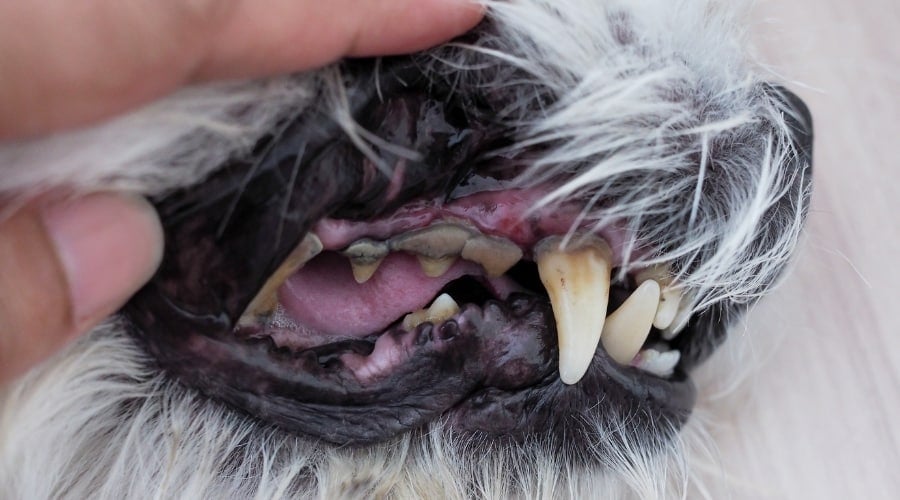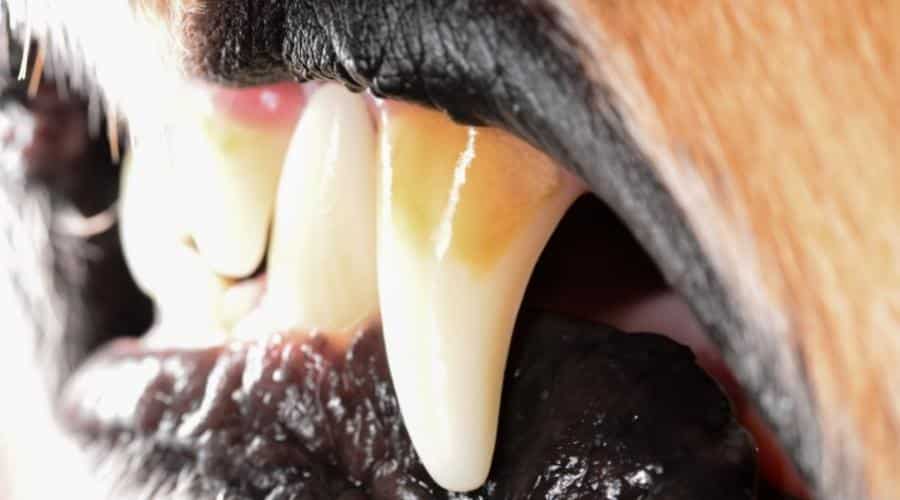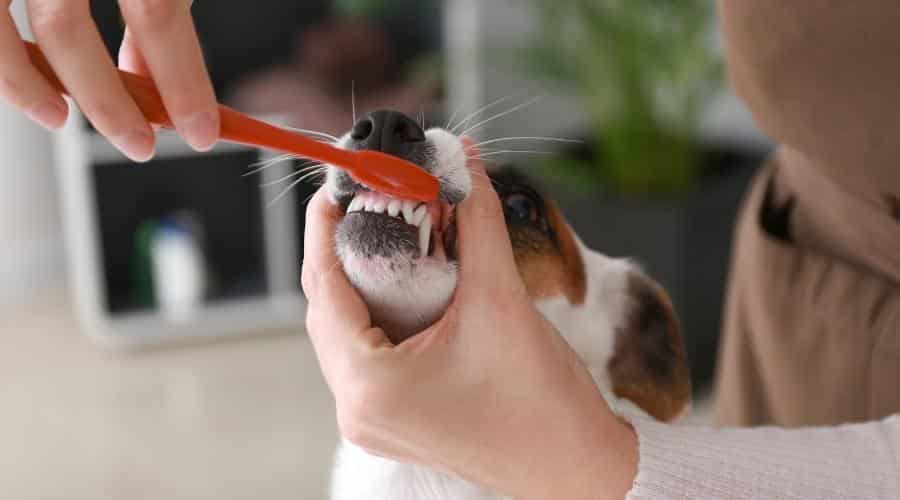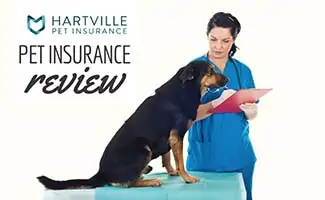Best Pet Dental Insurance (What’s Covered & Hidden Exclusions)
When you purchase through links on our site, we may earn a commission. Here’s how it works.
Did you know that up to 90% of dogs over age 3 develop periodontal disease, yet most pet insurance plans won’t pay a dime to treat it? What starts as mild gum inflammation can quickly escalate into severe infections, allowing bacteria to invade the bloodstream and attack the heart, liver, and kidneys. By the time symptoms become obvious, your pet could be in serious pain, and treatment may involve costly extractions or even life-threatening complications.
Table of Contents
Not all pet insurance covers dental care, and the difference in coverage can be staggering. Some policies fully cover gum disease, extractions, and endodontic treatments, while others exclude them entirely—leaving you with hefty vet bills. This is particularly crucial for small breeds, as their compact mouths make them more vulnerable to dental disease.
I’ve analyzed over 10 pet insurance policies to uncover which companies offer the best dental coverage and which leave you paying out of pocket. Keep reading to find out which provider will protect your pet’s teeth before it’s too late.
| Winner | Runner-Up | Third Place |
|---|---|---|
 |  |  |
| Read Review | Read Review | Read Review |
What Dental Conditions Does Pet Insurance Cover? (Comparison Table)

The table below provides a side-by-side comparison of the pet insurance companies we review, making it easier to evaluate their pet dental coverage. However, policies can vary based on factors like location and pet details, so it’s crucial to confirm coverage and exclusions with the insurer directly before enrolling.
| Company | Exam Fees | Wellness Plans* | Teeth Cleaning Allowance (Wellness Plan) | Non-Routine Dental Care | Gum Disease | Extractions | Endodontic Disease | Developmental Abnormalities | Dental Trauma | Get A Quote |
|---|---|---|---|---|---|---|---|---|---|---|
 | Extra Fee | $150 | Canines & Carnassials | Enrolled Before 6 Months | Get A Quote | |||||
 | Up to $125 | Get A Quote | ||||||||
| Due To Accident | Get A Quote | |||||||||
 | Extra Fee | Up to $75 | Due To Accident | Get A Quote | ||||||
 | Up to $700 | Get A Quote | ||||||||
 | Extra Fee | Up to $150 | Extra Fee | Extra Fee | Due To Accident | Extra Fee | Get A Quote | |||
 | Canines & Carnassials | Canines & Carnassials | Enrolled Before 6 Months | Get A Quote | ||||||
| Extra Fee | $150 | Due To Accident | Get A Quote | |||||||
 | Up to $150 | Get A Quote | ||||||||
 | Up to $150 | Get A Quote | ||||||||
 | Not Included | Get A Quote |
Best Pet Dental Coverage Insurance
It’s important to note that any dental illness or injury detected before your policy’s start date or during the waiting period may be considered a pre-existing condition and excluded from coverage.
The winners below were selected based solely on their dental coverage. However, if you’re looking for the best overall pet insurance providers, check out my best pet insurance guide for a broader comparison. The details below come directly from each company’s sample policy to ensure accuracy.
Winner: Fetch Review

Fetch Pet Insurance provides strong dental coverage, including both accidents and illnesses, without requiring an additional rider. Unlike some competitors, Fetch covers all teeth, not just canines and carnassials. It also includes gum disease, tooth extractions, and endodontic disease in its policy, making it an excellent contender for your dental coverage needs.
Dental Coverage
- Covers all teeth (not just canines and carnassials)
- Covers dental accidents (broken teeth, trauma, extractions)
- Covers dental illnesses (gum disease, endodontic disease, stomatitis)
- Covers tooth extractions due to illness or accident
- Includes developmental abnormalities
- 15-day waiting period for dental illnesses & accidents
Pros
- Covers dental accidents & illnesses
- All teeth are covered
- Extractions due to accident or illness
- Includes coverage for gum disease & endodontic disease
- No dental illness rider required
- No vet exam fee & prescription medication riders
- Optional routine care plan provides up to $125 for routine teeth cleanings
Cons
- Annual dental exam is required
Get a quote from Fetch here or read my full Fetch review for more details.
Runner-Up: Embrace Review

Embrace offers some of the most comprehensive dental coverage in the industry, covering both accidents and illnesses affecting all teeth—not just canines and carnassials. Unlike many competitors, Embrace includes coverage for gum disease, tooth extractions, and endodontic treatments in its base policy, making it a strong option for pet owners prioritizing dental health.
Dental Coverage
- Covers all teeth (not just canines and carnassials)
- Covers dental accidents (broken teeth, trauma, extractions)
- Covers dental illnesses (gum disease, endodontic disease, stomatitis)
- Covers tooth extractions due to illness or accident
- Includes developmental abnormalities
- 14-day waiting period for dental illnesses like gum disease
- 2-day waiting period for dental accidents like a broken tooth
Pros
- Covers dental accidents and illnesses
- Covers all teeth
- Extractions due to accident or illness
- Includes stomatitis, endodontic disease & extractions
- No dental rider required
- Wellness plan available for dental care items, including cleaning, toothbrushes, toothpaste, dental chews, checkups, and dietary dental supplements
Cons
- Vet exam fees require a rider
- Prescription medications require a rider
- $1,000 annual limit on dental illness
Get a quote from Embrace here or read my full Embrace review for more details.
Third Place: Pets Best Review

Pets Best provides detailed dental coverage, including periodontal disease, tooth extractions, and trauma-related injuries. Unlike some competitors, all teeth are covered for gum disease, though endodontic treatment is limited to canines and carnassials. An optional wellness plan can also reimburse up to $150 for routine dental cleanings.
Dental Coverage
- Covers all teeth for periodontal disease
- Covers endodontic treatment for canines and carnassials
- Covers tooth extractions due to illness or accident
- Includes extractions for deciduous teeth, dentigerous cysts, enamel hypoplasia, and unerupted/impacted teeth (if enrolled before six months old)
- 14-day waiting period for dental illnesses like periodontal disease
- 3-day waiting period for dental accidents like broken teeth
Pros
- Covers dental accidents and illnesses
- Extractions due to accident or illness
- Includes periodontal disease
- Optional wellness plan provides up to $150 for routine dental cleanings
- No prescription medication rider
Cons
- Endodontic treatment only covered for canines & carnassials
- Vet exam fees require a rider
Get a quote from Pets Best here or read my full Pets Best review for more details.
How Do Other Pet Insurance Companies Compare?
While the companies below didn’t make my top rankings for dental coverage, I’ve reviewed their sample policies to help you understand their offerings. If you’re considering one of these providers, I recommend reading their terms carefully, as coverage for dental illnesses and procedures can vary significantly.
Healthy Paws | Figo | Lemonade | Trupanion | AKC Pet Insurance | ASPCA Pet Insurance | Spot | Nationwide
Healthy Paws Review

Healthy Paws keeps things simple with a single comprehensive accident and illness policy, but its dental coverage is more limited compared to other top providers. It covers extractions and treatment only for dental injuries caused by accidents, meaning conditions like periodontal disease and other dental diseases aren’t covered.
Dental Coverage
- Covers dental accidents (tooth fractures, trauma, extractions)
- Does not cover dental illnesses (periodontal disease, endodontic disease, stomatitis)
- No separate dental rider available
- 15-day waiting period for dental accidents like broken teeth
Pros
- Unlimited payouts on all plans
- Covers extractions for dental injuries
Cons
- Excludes dental illness
- No wellness plan option for preventive dental care
- Excludes vet exam fees
Get a quote from Healthy Paws here or read my full Healthy Paws review for more details.
Figo Review

Figo provides strong dental coverage as part of its standard accident and illness policy, covering both dental accidents and illnesses without requiring an add-on. While its sample policy lacks detailed dental language, further research confirms that Figo covers major dental conditions, including gum disease and endodontic disease. However, it does not cover developmental abnormalities.
Dental Coverage
- Covers all teeth (not just canines and carnassials)
- Covers dental accidents (broken teeth, trauma, extractions for damaged teeth)
- Covers dental illnesses (gum disease, endodontic disease, stomatitis)
- Tooth extractions for illness are not covered
- 14-day waiting period for dental illnesses
- 1-day waiting period for dental accidents
Pros
- Covers dental accidents & illnesses without an add-on
- Includes gum disease, endodontic disease, & stomatitis
- Short 1-day waiting period for accidents
- Wellness plans available with dental cleaning coverage ($40 or $75 reimbursement)
Cons
- Tooth extractions for illness are excluded
- Gingivitis and periodontal disease caused by tartar buildup are not covered
- Vet exam fees require a Powerup (add-on) for coverage
- Developmental abnormalities excluded
Get a quote from Figo here or read my full Figo review for more details.
Lemonade Review

Lemonade is a budget-friendly pet insurance option with fast AI-driven claims processing and customizable add-ons. While its base policy covers dental accidents, it does not cover dental illnesses unless you purchase the Dental Illness add-on, which provides $1,000 in annual coverage for conditions like gum disease and stomatitis. Lemonade’s wellness plan also includes up to $150 toward dental cleanings, making it a flexible choice for those looking to manage routine and unexpected dental costs.
Dental Coverage
- Covers dental accidents (broken teeth, trauma, extractions due to accidents)
- Dental Illness rider required for gum disease, endodontic disease & stomatitis
- $1,000 annual limit on dental illness coverage with add-on
- Wellness plan includes up to $150 for dental cleaning
- 14-day waiting period for dental illnesses (if add-on is purchased)
- 2-day waiting period for dental accidents
Pros
- Wellness plan includes $150 for dental cleaning
- Prescription medications included without an add on
Cons
- No dental illness coverage without add-on
- Extractions due to illness are not covered
- Exam fees require a separate rider
- Developmental abnormalities are excluded
Get a quote from Lemonade here or read my full Lemonade review for more details.
Trupanion Review

Trupanion offers dental coverage for non-routine treatments, including tooth extractions, developmental abnormalities (if enrolled before six months old), and dental injuries or illnesses. However, to maintain coverage, pet owners must have their pet’s teeth examined by a veterinarian at least once every 12 months and follow all recommended dental care. Unlike many competitors, Trupanion does not offer a wellness plan for routine cleanings, and coverage for teeth other than canines and carnassials is limited to extraction costs.
Dental Coverage
- Covers dental injuries and illnesses
- Tooth extractions covered for all teeth
- Developmental abnormalities covered if enrolled before six months old
- Requires annual dental exam to maintain coverage
- No separate dental wellness or cleaning coverage
- Covers canine & carnassial teeth only for dental illness (gum disease, endodontic disease, stomatitis)
Pros
- Covers both dental accidents and illnesses
- Includes developmental abnormalities (if enrolled before 6 months old)
- No payout limits, ensuring full coverage for eligible treatments
- Prescription medications included without an add on
Cons
- Requires annual vet dental exams to maintain coverage
- No wellness plan for routine dental care (cleanings, checkups, etc.)
- Coverage for teeth other than canines and carnassials is limited to extractions
Get a quote from Trupanion here or read my full Trupanion review for more details.
AKC Pet Insurance Review

AKC Pet Insurance provides limited dental coverage, focusing primarily on tooth extractions for permanent broken teeth due to accidents. However, it does not cover dental illnesses like gingivitis, periodontal disease, or abscessed teeth. To help with preventive care, AKC offers an optional wellness plan that includes $150 for dental cleanings.
Dental Coverage
- Covers tooth extractions for permanent broken teeth due to accidents
- No coverage for dental illnesses (gingivitis, periodontal disease, abscessed teeth, etc.)
- No coverage for root canals, crowns, or other advanced dental procedures
- Optional wellness plan offers $150 toward dental cleanings
- 2-day waiting period for dental accidents like a broken tooth
Pros
- Covers extractions for accident-related broken teeth
- Wellness plan available for routine cleanings
- Prescription medications included without an add on
Cons
- No coverage for dental illnesses (periodontal disease, root canals, abscessed teeth)
- Excludes diseased or infected teeth
- Excludes developmental abnormalities
- Vet exam fees require an add-on
Get a quote from AKC here or read my full AKC review for more details.
ASPCA Pet Insurance Review

ASPCA Pet Insurance provides limited dental coverage, focusing primarily on tooth extractions for accidents and illnesses. However, it does not cover dental illnesses like gum disease or endodontic disease, nor does it cover developmental abnormalities. Routine dental cleanings are available with a wellness plan add-on.
Dental Coverage
- Covers extractions for both accidents and illnesses
- No coverage for dental illnesses (e.g., gum disease, endodontic disease)
- No coverage for developmental abnormalities
- Wellness plans available with $100 or $150 toward dental cleanings
Pros
- Covers tooth extractions for accidents and illnesses
- Wellness plan available for dental cleanings
- Vet exam fees & prescription medications included without an add on
- Most customizable accident-only plan
Cons
- No coverage for dental illnesses
- No coverage for developmental abnormalities
Get a quote from ASPCA here or read my full ASPCA review for more details.
Spot Review

Spot Pet Insurance provides limited dental coverage, mainly covering tooth extractions due to accidents and illnesses. However, it does not cover dental illnesses such as gum disease or endodontic disease, nor does it include developmental abnormalities. Routine dental cleanings are available with its pet wellness plan add-on.
Dental Coverage
- Covers extractions for accidents and illnesses
- No coverage for dental illnesses (e.g., gum disease, endodontic disease)
- No coverage for developmental abnormalities
- Wellness plans available with $100 or $150 toward dental cleanings
Pros
- Covers tooth extractions for accidents & illnesses
- Wellness plan available for routine cleanings
- Vet exam fees & prescription medications included in base policy
Cons
- No coverage for dental illnesses
- No coverage for developmental abnormalities
Get a quote from Spot here or read my full Spot review for more details.
Nationwide Review

If dental coverage is a priority, Nationwide may not be the best choice, as its policy includes several dental exclusions and lacks coverage for dental illnesses, developmental abnormalities, and trauma to the teeth, face, and jaw.
Dental Coverage
- Covers tooth extractions due to illness or accident
- Does not cover dental illnesses (e.g., gum disease, endodontic disease)
- Does not cover developmental abnormalities
- No coverage for trauma-related injuries to the teeth, face, or jaw
- Offers two wellness plans, but neither includes dental cleanings
Pros
- Covers tooth extractions for accidents & illnesses
- Vet exam fees & prescription medications included in base policy
Cons
- No coverage for dental illnesses
- No coverage for developmental abnormalities
- Excludes trauma-related dental injuries
- Wellness plan does not cover dental cleanings
Get a quote from Nationwide here or read my full Nationwide review for more details.
What Are The Most Common Dental Issues For Pets?
Maintaining good dental health is essential for your pet’s overall health and well-being. Many dental issues are preventable with proper oral care, including regular toothbrushing, using the right toothpaste, appropriate chew toys, professional cleanings, and regular vet checkups. Below are some of the most common dental disorders in dogs and cats, along with their symptoms, treatments, and at-risk breeds.
If you’re curious about the cost of routine and emergency dental procedures, check out this guide to dog teeth cleaning costs for a breakdown of pricing and what to expect.
Gum Disease (Periodontal Disease)
Gum disease is the most prevalent dental issue in pets, caused by plaque buildup that leads to bacterial infections. Over time, this damages gums, ligaments, and jawbone, potentially leading to tooth loss and severe pain.
Gingivitis (Early-Stage Gum Disease)

Gingivitis is the first stage of gum disease, characterized by gum inflammation without damage to deeper tissues. It’s most common in dogs around age two and is reversible with proper dental care.
Symptoms
- Swollen, red, or purple gums
- Bleeding gums when touched
- Persistent bad breath
Predisposed Breeds
Periodontitis (Advanced Gum Disease)
Periodontitis occurs when gingivitis progresses, leading to permanent damage to the gums, ligaments, and jawbone. It typically presents itself after years of plaque, tartar, and gingivitis. It is irreversible and requires medical intervention.
Dogs on a hard kibble diet tend to have fewer issues since the kibble can help clean the teeth as they chew. Back teeth and upper teeth are typically more affected by periodontitis than front teeth and lower teeth.
Symptoms
- Gum recession and tooth root exposure
- Loose or missing teeth
- Severe bad breath
- Difficulty eating
Treatment
Periodontitis is commonly diagnosed around four to six years old.
- Professional dental cleanings under general anesthesia
- Tooth extractions for severe cases
- At-home care:
- Daily tooth brushing
- Diet changes
- Plaque prevention gel
- Oral rinses
Predisposed Breeds
- Small and Toy Breeds
- Dachshunds
- Lhasa Apsos
- Cavalier King Charles Spaniels
- Yorkies
- Chihuahuas
- Poodles
- Maltese
- Pomeranians
Endodontic Disease (Pulpitis)
Endodontic disease affects the tooth pulp (the living tissue inside the tooth) due to injury, fractures, or infection. This condition is often painful and, without treatment, can lead to abscesses, severe infections, and tooth loss.
Causes Of Endodontic Disease
Tooth fractures are one of the most common causes of pulpitis in dogs. These fractures can occur from:
- External trauma (e.g., rough play, falls, car accidents)
- Chewing on hard objects like bones, antlers, hard nylon toys, rocks, or fences
Types Of Endodontic Disease
There are two types of pulpitis:
- Reversible Pulpitis – The pulp is damaged but can heal with treatment.
- Irreversible Pulpitis – The pulp is dead and requires a root canal or tooth extraction.
Symptoms & Diagnosis
Dogs instinctively hide pain, making endodontic disease difficult to detect without a vet exam. Symptoms may include:
- Discolored teeth (reddish-brown, purple, or gray)
- Swelling around the face or jaw
- Visible fractures or small black/red holes in the crown
- Sensitivity to touch or chewing difficulties
- Loss of appetite
A vet can confirm the diagnosis with dental x-rays, which help identify damage that isn’t visible to the naked eye.
Predisposed Breeds
- Small and Toy Breeds
- Dachshunds
- Lhasa Apsos
- Cavalier King Charles Spaniels
- Yorkies
- Chihuahuas
- Poodles
- Maltese
- Pomeranians
- Labrador Retrievers
- German Shepherds
Developmental Abnormalities

Some pets are born with misaligned or malformed teeth, which can lead to chewing difficulties, increased plaque buildup, and jaw discomfort. These issues can contribute to long-term dental and health complications if left untreated.
Unerupted Teeth
Certain breeds, particularly small and brachycephalic (flat-faced) dogs, are prone to unerupted teeth, where teeth remain beneath the gumline instead of emerging properly.
- Risks: Unerupted teeth can form cysts, which may destroy the jawbone if not treated.
- Diagnosis: X-rays help identify unerupted teeth and detect cysts.
- Treatment: Extraction is typically recommended to prevent long-term oral damage.
Predisposed Breeds
- Shih Tzus
- Pugs
- Bulldogs
- Lhasa Apsos
- Boston Terriers
- Maltese
Improper Bite (Malocclusion)
Proper tooth alignment is essential for chewing and overall dental health. When the mouth and teeth don’t develop correctly, various complications can arise:
- Overbite – The upper jaw extends too far forward (Common in Collies, Shelties, Dachshunds)
- Underbite – The lower jaw protrudes past the upper jaw (Common in Boston Terriers, Pekingese, French Bulldogs, English Bulldogs, Cavalier King Charles Spaniels, Pugs, Lhasa Apsos, Boxers, Shih Tzus)
- Extra Teeth – Leads to crowding and increased risk of gum disease
- Delayed Baby Tooth Loss – Retained baby teeth can block permanent teeth from growing correctly
- Rotated or Tilted Teeth – Can cause discomfort and food impaction (Common in Shih Tzus, Pugs, Bulldogs, Lhasa Apsos, Boston Terriers, Maltese)
- Crowding of Teeth – Increases plaque buildup and the risk of periodontal disease (Common in Shih Tzus, Pugs, Bulldogs, Lhasa Apsos, Boston Terriers, Maltese)
Enamel Defects
Enamel is the protective outer layer of the tooth, but it can develop abnormally due to fever, malnutrition, trauma, or infection during tooth formation.
- Canine Distemper Virus – This virus attacks enamel-producing cells, leading to weak, thin enamel.
- Malnutrition in Puppies – Severe nutritional deficiencies during development can cause lifelong enamel defects.
- Trauma or Infection – A fractured baby tooth can damage enamel on developing permanent teeth.
- Genetics – Some breeds inherit weaker enamel, making them more prone to dental disease.
Studies have shown that enamel defects can occur in approximately 17.5% of dogs following certain dental procedures, such as the extraction of deciduous canine teeth.
Predisposed Breeds
- Siberian Huskies
- Samoyeds
- Standard Poodles
Trauma To The Face & Jaw
Facial and jaw trauma in pets can result from falls, aggressive chewing, fights with other animals, car accidents, or other high-impact injuries. In some cases, underlying conditions like periodontal disease or cancer can weaken the jaw, making fractures more likely. Early intervention is crucial to prevent long-term complications such as chronic pain, misalignment, or difficulty eating.
Treatment
Depending on the severity of the injury, your veterinarian may recommend:
- Crown Placement – Protects fractured teeth and restores function.
- Root Canals – Preserves damaged teeth by treating infected or exposed pulp.
- Wound Care & Surgery – Addresses soft tissue injuries and repairs fractures, which may require wiring or plating to stabilize the jaw.
Pets experiencing facial or jaw trauma may also need pain management, antibiotics, and dietary adjustments during recovery. If your pet has suffered a facial or jaw injury, seeking veterinary care as soon as possible improves the chances of a full recovery.
Frequently Asked Questions

Here are answers to some common questions about pet dental insurance to help you understand coverage options and make the best choice for your pet.
Does Pet Insurance Cover Tooth Extractions?
Yes, but coverage varies. Pets Best, Fetch, Embrace, Trupanion, ASPCA, Spot, and Nationwide cover tooth extractions for both accidents and illnesses. Healthy Paws, Figo, Lemonade, and AKC only cover tooth extractions for accidents.
Does Pet Insurance Cover Routine Dental Cleanings?
Dental cleanings are classified as preventive care and are not included in standard pet insurance policies. However, if you’d like coverage for dental cleanings, some providers offer wellness plan add-ons that can help offset the cost.
What Pet Insurance Covers Dental Cleanings?
Routine dental cleanings aren’t covered by standard pet insurance plans, but wellness add-ons from Pets Best, Fetch, Embrace, Figo, Lemonade, ASPCA, Spot, and AKC can help cover the cost.
How Much Does Pet Dental Insurance Cost?
Costs vary based on the provider, but the average accident and illness insurance policy in the U.S. is around $56 for dogs ($32 for cats). Compare plans here.
Does Pet Insurance Cover Gum Disease?
Yes, but coverage details vary by provider:
- Pets Best, Fetch, Figo, and Embrace – Include gum disease (periodontal disease) in standard policies.
- Lemonade – Offers coverage with an additional dental illness rider.
- Trupanion – Covers gum disease treatment for canine and carnassial teeth only.
How To Choose The Best Pet Insurance
While dental coverage is a key factor, it’s important to consider the bigger picture. Pets can face unexpected accidents, chronic illnesses, and emergency treatments, so selecting a well-rounded insurance plan is crucial for long-term protection.
When evaluating pet insurance providers, keep these factors in mind:
- Coverage & Claims Process – Compare policy details, including covered conditions, exclusions, waiting periods, reimbursement rates, deductibles, and payout limits. My comparison tables break down these details to help you choose the best fit.
- Customer Service & Reputation – A good policy means little if claim processing is slow or customer support is unhelpful. Read the pros and cons of each provider and check real customer experiences to gauge reliability.
- Cost & Value – Pet insurance pricing varies by breed, age, and location. Use my free quote form to get personalized quotes from top providers to compare plans and find one that fits your budget without sacrificing essential coverage.

Remember, you know your dog better than anyone else so only you can make this decision. However, I can help you become more informed and navigate this tricky subject.
Methodology
Choosing the right pet insurance for dental coverage is crucial, as many policies exclude routine and non-routine dental treatments. To help pet parents find the best coverage, we analyzed over 40 U.S. pet insurance providers and compared their dental benefits, exclusions, and reimbursement policies.
Our in-depth research includes:
Comprehensive Policy Analysis
- Scrutinized fine print from sample policies to understand what’s covered and what’s excluded.
- Compared dental coverage for accidents, illnesses, extractions, endodontic disease, and periodontal disease.
- Evaluated plan flexibility, including reimbursement rates, deductibles, and annual payout options.
Real-World Consumer Insights
- Ran thousands of price quotes across different breeds, ages, and locations.
- Read thousands of customer reviews to assess real-world claim experiences.
- Analyzed common complaints and praise regarding dental coverage.
Company & Customer Experience Evaluation
- Tested the purchase process to see how easy it is to get a policy.
- Spoke with customer service representatives to gauge responsiveness and transparency.
- Submitted claims firsthand to compare processing times and reimbursement speeds.
- Met with company representatives to stay updated on policy changes and industry trends.
Unbiased Rankings & Industry Impact
Unlike many other review sites, we do not accept payment for rankings. Companies must earn their position based on performance. Our rankings are independent, data-driven, and based on real-world experiences.
Pet insurance companies frequently review our analysis for accuracy and use our findings to improve policies. We only recommend the best options because we believe pet parents deserve access to transparent, expert-backed insights.
Why Trust Canine Journal?
Canine Journal has been covering pet insurance in-depth since 2012, long before many competitors recognized its importance. Our team has extensively researched dental coverage across pet insurance providers, ensuring pet owners get accurate, detailed insights.
Kimberly Alt, Canine Journal’s lead pet insurance expert, has spent over a decade analyzing policies, including those covering dental illnesses, extractions, and periodontal disease. She has reviewed sample policies from multiple providers, breaking down complex terms to help pet owners understand what’s actually covered.
To ensure accuracy, Kimberly consulted with Michelle Schenker, Canine Journal’s in-house licensed insurance agent, who verifies coverage details and policy exclusions. Together, they provide trusted, expert-backed recommendations to help you find the best dental insurance for your pet.



